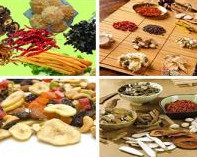
- Shandong Microwave Machinery Co.,Ltd.
- To be the Leader of microwave drying and edible oil refining equipments Manufacturer
Home> Company News> Study on Different Drying Process of Golden Camellia Flowers
- AddressNo. 225, Huangqiao Village, Beiyuan, Tianqiao District, Jinan, Shandong, China
- Factory AddressNo. 225, Huangqiao Village, Beiyuan, Tianqiao District, Jinan, Shandong, China
- Phone(Working Time)+86 0531 85064681
- Phone(Nonworking Time)0086-15020017267
- Fax+ 86 0531 85064682
Study on Different Drying Process of Golden Camellia Flowers
2018-11-16 15:26:06
Abstract: Objective To compare the active ingredients and active substances of Camellia sinensis after different drying processes, and to explore the best drying process of Camellia. Method using freeze drying, oven drying and Microwave drying equipment, after sample processing, sent to the Analytical Testing Research Center for nutrient analysis.
Results The overall evaluation effect was followed by microwave drying > freeze drying > oven drying. Conclusion The best drying effect of Camellia sinensis is microwave drying, followed by freeze drying, and the drying effect of oven is the worst.
Key words: Camellia sinensis microwave drying; drying process; chemical composition; active substance

Jinhuacha belongs to the Camellia sinensis group, which is mainly distributed in the southern, southwestern and northern parts of Guangxi in China. It is located in the tropical monsoon climate zone on the southern margin of the subtropical zone and the northern margin of the tropics. It is the first-class endangered plant in China, at home and abroad. They are well-known for their wild flower breeding germplasm resources because their flowers contain rare yellow genes with high ornamental value.
On the other hand, a large number of studies have shown that Jinhuacha is rich in natural organic bismuth, selenium, molybdenum, manganese, vanadium, zinc and other trace elements that have important health effects on the human body, as well as essential nutrients for tea polyphenols, vitamins and amino acids. More than 400, with a high health value. Jinhuacha combines ornamental, breeding, medicinal and health care, and has high economic value and is of great development significance.
In this paper, the Camellia sinensis was treated by different drying processes, and the nutritional components of the processed Camellia sinensis were tested and compared, which provided a scientific basis for the scientific standard of the drying process of Camellia sinensis. Through this research, it is hoped that the Camellia sinensis will be preserved for a long time, providing long-term sample resources for further scientific research and economic development of Jinhuacha.
In this paper, the drying process of Camellia sinensis is studied. Different drying processes have a great influence on the active ingredients and active substances of Camellia sinensis, and the effects of various drying processes are comprehensively compared by the efficacy method.
The experimental results show that the comprehensive evaluation results are microwave drying > freeze drying > oven drying; the best drying process of Camellia is microwave drying. The content of chemical substances and active ingredients was determined by the drying test. The results showed that the use of a proper drying process to dry the Camellia sinensis not only preserves the Camellia sinensis for a long time, but also has a high potential economic development value.
 High efficiency food beverage factory stone paper production line
High efficiency food beverage factory stone paper production line Factory price Fully automatic Machine PP/PS Plastic Sheet Production Line
Factory price Fully automatic Machine PP/PS Plastic Sheet Production Line used deformered bar rolling mill production line
used deformered bar rolling mill production line Manufacturing plant automatic factory puffed sticky rice cracker production line
Manufacturing plant automatic factory puffed sticky rice cracker production line Production Line Pp Ppr Plastic Pipe Making Machine 20-63mm Multi-layer Extrusion Production Line For Water Supply
Production Line Pp Ppr Plastic Pipe Making Machine 20-63mm Multi-layer Extrusion Production Line For Water Supply